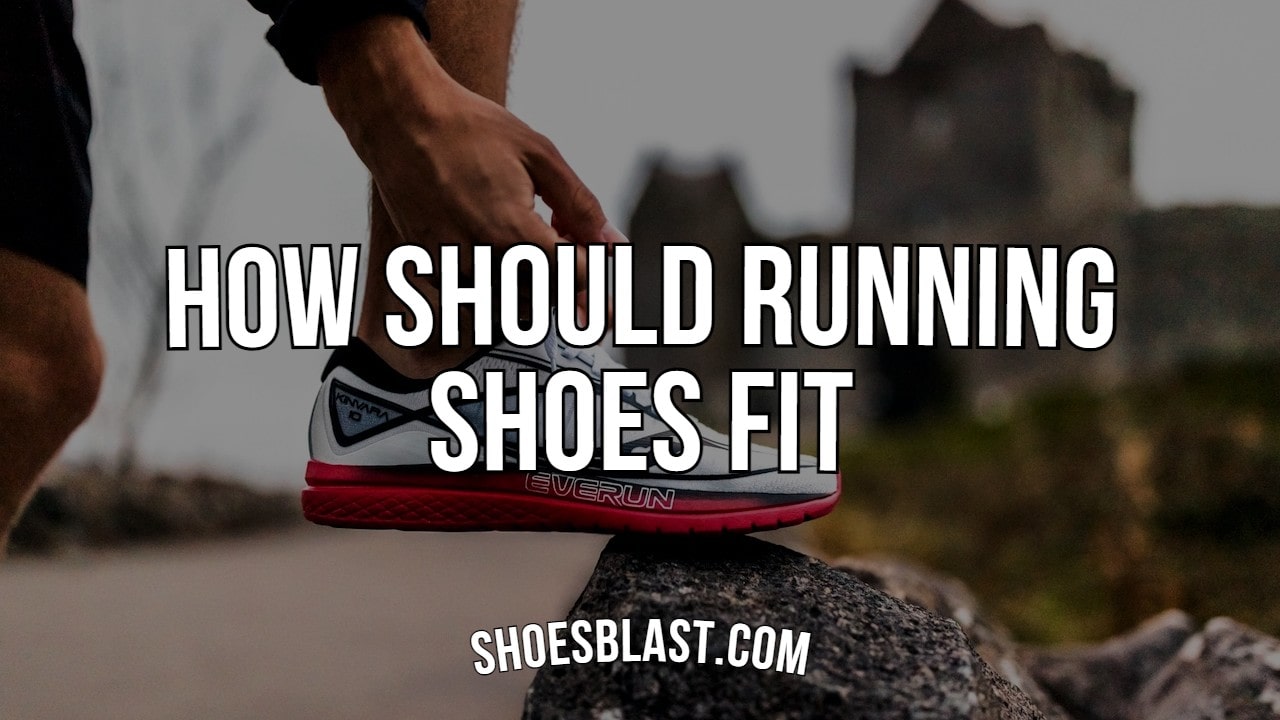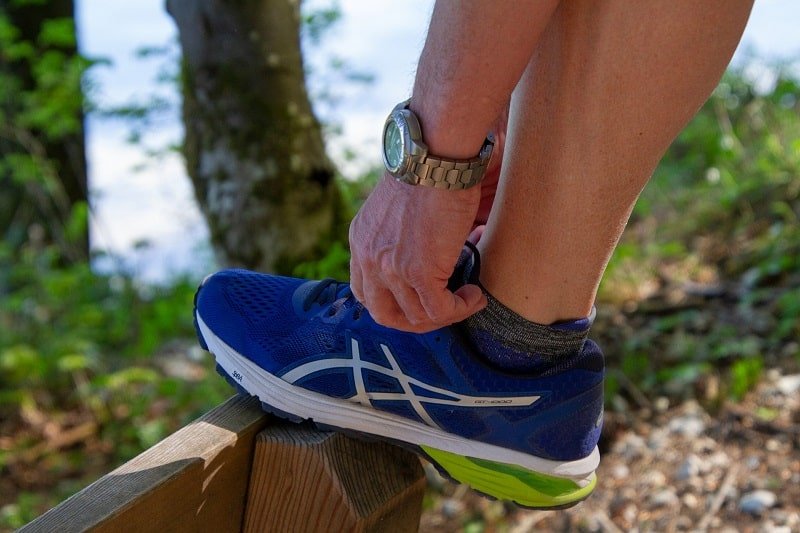The toe deal | The pinky deal | The heel deal
I’ve been running for more than 14 years, but it’s only in the last few years I started to understand what type of running shoes I need to wear and how they should fit me.
Not knowing how a shoe should fit can hurt your feet, create blisters, and produce injuries. Just think how many steps you make in one run. It is crucial to have the right fit to run longer, faster, and feel comfortable.
Here are a few steps you should to get the right fitting for your running shoes.
First step: Pick a Running Store.
It is understandable that time might not be your friend, but if you get the chance make a trip to the running store and try on multiple pairs of shoes from different brands. All shoes might look the same on the outside, but they often have different internal contours and support.
Second step: Double-check if you have the right size.
Your size might change from college to later in life. It is best to measure your foot’s size again. If you are in a store, ask someone to assist you with a professional foot measurement device.
If you are ordering shoes online, you can measure them at home. Place your foot on a white piece of paper (it will be easier if someone can help you outline the length and width, but if you’re doing it alone, I recommend sitting on a chair, not standing).
After you outlined your foot’s dimensions, with a ruler measure the longest and widest part of the outline. Repeat with the other food.
Write down the numbers. Use an online chart to determine your true size. Do not buy a pair of shoes only because it fits the length, the width aspect is just as important. Most of the brands offer a wide option for their running collection.
Third step: Find what type of pronation you have.
Pronation is describing your foot’s natural movement which rolls from heel to toe as you walk or run. There are three types of pronation: neutral, overpronation, and supination.
Neutral pronation means that when your foot strikes the ground the pressure is distributed evenly from heel to toe.
Overpronation means that when your foot strikes the ground it will put more pressure on the big toe. The foot lands on the outside of the hell then roll inward excessively.
Supination means that when your foot strikes the ground it will put more pressure on the small toe on the outside of the foot. to learn more about pronation, click here.
Knowing your type of pronation is one of the main steps in finding the right pair of shoes, which will reduce your injuries and improve your performance.
Stability shoes are mostly used by people with neutral pronation. Motion-control shoes are a good option for those with overpronation and cushioning shoes are suitable for people with supination.
The easiest way to find out what type of pronation you have is through a gait analysis, which can most likely be done for free in the running store.
To determine your pronation from home, you can do a Wet Test. You will need cardboard and some water. The first step will be to get your foot wet. The second step will be to place your wet food on the cardboard. The shape of the imprint on the cardboard will determine what type of pronation you have.
Fourth step: Wear your Running Socks.
When you go shopping for running shoes wear socks that you normally run with. Different types of socks can fit the shoe differently. If you have insoles/orthotics for your shoes, take them with you. You should put them on before buying the shoes.
After you found the right size and you have your favorite socks on look for the following:
The toe deal.
Your toes should never touch the tip of the shoe. This extra space is called wiggle room. It is very common among runners to get their shoes half to a full size larger to avoid blisters or numbness.
The pinky deal.
Your pinky should feel like it has plenty of room to move. If your pinky toe feels squished, try on a wider pair. It shouldn’t rub your feet anywhere.
The heel deal.
Your heel should fit perfectly cupped in the back of the shoe. Here is where you don’t want any extra room. If your heel moves up and down when you walk or run, it creates discomfort and most likely blisters.
Not wearing the right-fit running shoes gets hectic if you a foot-related issues like bunions, Morton’s neuroma. hammertoes and other common deformations.
Consider the weight and firmness of the shoe. Every pair of shoes has a different weight and firmness. If the pair you are trying on feels too heavy, opt for another style that is lighter.
You don’t want to carry all that extra weight, especially on the last few miles of your run. Depending on how long you run per day, you should look for shoes that have more cushion and stability.
My Strategies
Most of my running shoes feel like I step on pillows. It is wonderful, but the comfort is not the only advantage of getting a pair of shoes with enough cushion, it has been discussed that these types of running shoes help with recovery and prevent the runner from getting diverse injuries. ‘
After you checked all the above and decided which pair to take home with you, make sure to walk in it for a few days before taking it for a run. I find this strategy to help with the comfortability of the foot during the run.
Running on it right away can make your feet feel stiff, too big or too small, create blisters or feel numbness. Make the shoes reach a point where it feels very comfortable to wear them.
If you are getting the same pair of shoes (same model) that you have been wearing, you can start running in it right away, but I will still recommend keeping it low mileage for the first few days.
Most brands tend to update their previous model; therefore, you might feel some changes. Alternating the new one with the old ones for a few weeks can help prevent possible running-related injuries.
It might seem overwhelming to have to pick from such a numerous variety of brands and shoes, but I see this as an advantage for every runner out there. We are all unique and having shoes to choose from it means that we are very likely to find the perfect pair that fits us and our needs. I hope you’ll find yours.

Hi there, my name is Petronela, and I am professional runner training in the United States but competing for Romania. I fell in love with running at the age of 14 when a stranger put around my neck a very shiny $3 dollar silver medal. Fourteen years later and I still get the same goosebumps when I win a medal.
The reason I am running is a true passion like it was when I was 14, the only difference is that small pressure to maintain the status of a professional runner, win races, and hit the times. That requires commitment, hard work, healthy choices, sacrifice, and many good pairs of running shoes. In my running career, I wore more than 1000 pairs of shoes, and my poor feet had the challenge to get used to them as many times.
I have a Master in Public Health Education and Promotion, a 4:34 indoor mile PR, a 4:13m 1500m PR, and 2:05 in the 800m. I run around 70 miles per week, and I am mentally preparing to run a 5k soon. The shoes I run in are one of the most important parts of the training process.
Nowadays, experts have developed amazing shoes that significantly impact and improve people’s athletic performances and because they are available to everyone for purchase, it is important to know which one is the best pair the shoes for you, to achieve your specific goal. That is why I am here. To share with you a little bit of my knowledge and expertise about shoes.
I hope you enjoy it!


